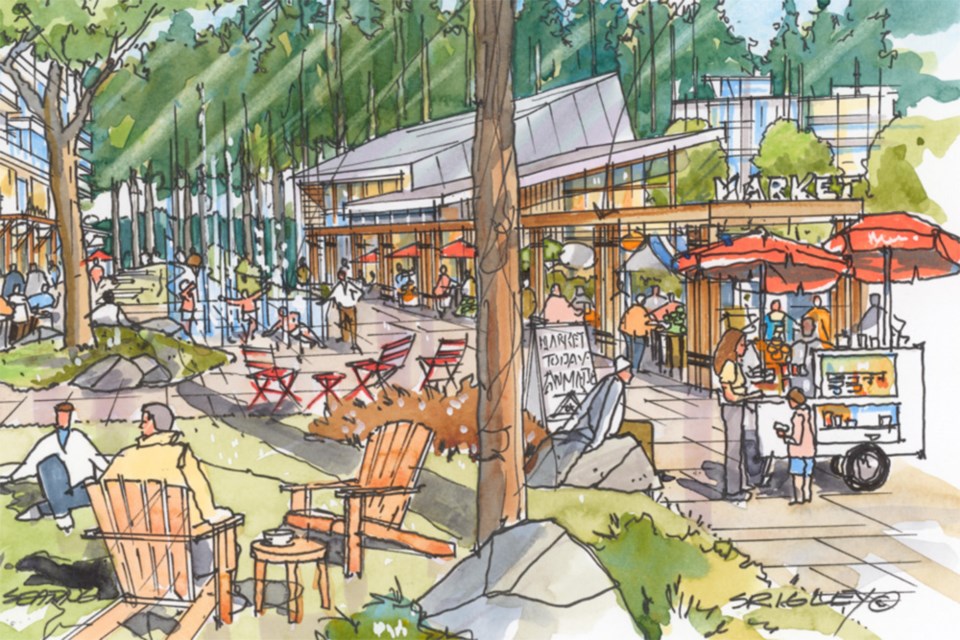The proponent of a development that would see the construction of 3,300 new homes in the south part of Anmore says a decision by village councillors to require a detailed neighbourhood plan is putting the project in jeopardy.
In a letter to Anmore council, Greg Moore, president and CEO of Icona Properties, said creation and approval of such a plan would delay any progress on the development by more than a year.
“Given the uncertain process and the need to manage associated risks, we will not proceed as planned without clear and decisive direction from council,” Moore said in the letter, which was dated Feb. 2 and received by council on Feb. 6.
That’s the same day councillors voted unanimously to task staff to draft the terms of reference that would guide the creation of a neighbourhood plan for the 150- acre property Icona owns at the corner of 1st Avenue and Sunnyside Road. Council had previously given first reading to official community plan (OCP) amendments required for the project to continue moving forward last Dec. 5.
The neighbourhood plan would detail specifics about Icona’s development proposal, including what the streets would look like, how the neighbourhood would be serviced, what steps will be taken to protect trees and natural habitat, the schedule for constructing the project and even its impact on traffic.
Chris Boit, Anmore’s general manager of development services, said the terms of reference requested by council would function like a table of contents the developer must follow while creating its neighbourhood plan.
“We want to know about these important components of the neighbourhood,” he said.
In his letter, however, Moore claimed Icona already submitted a terms of reference. He added the document, which also outlines a strategy for community engagement, is aligned “with best practices from other communities throughout Metro Vancouver, including in Port Moody and Coquitlam.”
Moore said without a firm commitment to the project from Anmore council, all discussions about a neighbourhood plan would be “held captive” to the debate about the village’s rural roots versus a more urban future.
“We remain concerned regarding the lack of expressed council commitment to a future of complementary mixed uses for the Anmore South neighbourhood — something more than just residential on septic or shared septic systems,” Moore said.
In addition to the 3,300 new homes in low- and mid-rise condo buildings, townhouses and rental apartments that could triple Anmore’s population, Icona’s plan envisions commercial and mixed-use spaces, a new 25,000 sq. ft. community centre, a 9.3-acre park and more than four kilometres of accessible greenways and trails.
The development would also necessitate a connection to regional sewer and water services. Currently, most residential properties in Anmore are on septic systems, something the village has enshrined in its OCP as a key component of its character as a semi-rural enclave.
It took several pollution abatement orders and protracted negotiations with various levels of government for Anmore Green Estates to achieve the connection in 2022, more than four years after its failing septic system was suspected to be leaking contaminants like E coli and fecal coliform into the property of neighbouring Eagle Mountain Middle School.
At the Feb. 6 council meeting, McEwen conceded the property owned by Icona will get developed. But, he added, it will be council that ultimately determines what that development looks like.
“Change is happening,” he said. “We want to have a say in how it gets developed.”





